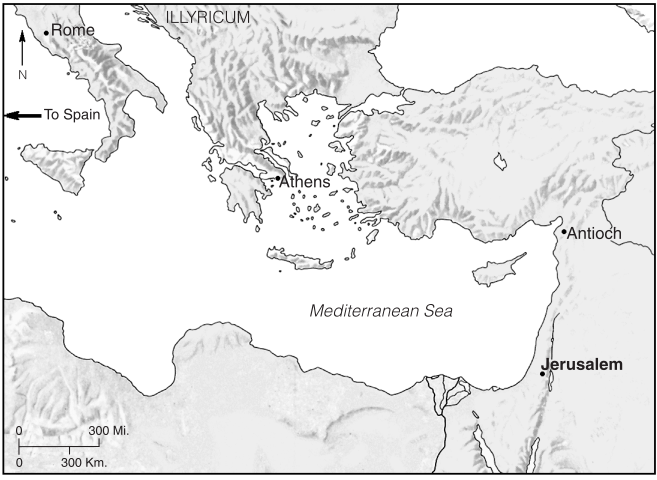
Illyricum
According to Romans 15:19, Paul had preached the gospel from Jerusalem to Illyricum, but at the time of writing, he had not yet gone to Rome.
Open Bible Data Home About News OET Key
OET OET-RV OET-LV ULT UST BSB MSB BLB AICNT OEB WEBBE WMBB NET LSV FBV TCNT T4T LEB BBE Moff JPS Wymth ASV DRA YLT Drby RV SLT Wbstr KJB-1769 KJB-1611 Bshps Gnva Cvdl TNT Wycl SR-GNT UHB BrLXX BrTr Related Topics Parallel Interlinear Reference Dictionary Search
A B C D E F G H I J K L M N O P Q R S T U V W XY Z
ILLYRICUM
Roman province northwest of Macedonia. During the height of the Roman Empire (c. AD 117), when it included Dalmatia, Illyricum was bounded by the Adriatic Sea on the west and by the provinces of Pannonia on the north, Upper Moesia on the east, and Macedonia on the south. Today Slovenia, Croatia, Bosnia, and Yugoslavia occupy that territory.
Throughout the fourth century BC, the people of Illyricum warred with the Macedonians, until the Macedonian ruler Philip II defeated them in 359 BC. During the third century BC, their acts of piracy against Greek and Roman ships led to a war with Rome that continued on and off for 60 years (229–168 BC). After a series of revolts and sporadic Roman rule, Illyricum was officially made part of the empire in 11 BC and renamed Dalmatia. It took another 20 years for the people to be fully integrated into Roman culture.
In 229 BC the Roman historian Polybius stated that “the Illyrians were not the enemies of this people or that, but were the common enemies of all.” Later Strabo, a first-century Greek geographer, was still describing the people of Illyricum as savage and rapacious.
The sole NT reference to Illyricum is found in the apostle Paul’s statement that he had preached the gospel from Jerusalem to as far as Illyricum (Rom 15:19). Although Acts does not document a ministry in that region, Paul may have visited Illyricum during his visit to Macedonia and Achaia just before returning to Jerusalem (Acts 20:1-2). Paul expressed a desire to continue his ministry in Spain, a totally Latin environment (Rom 15:28); in Illyricum he would have had his first experience in a culture that was more Latin than Greek.
See also Dalmatia.

Illyricum
According to Romans 15:19, Paul had preached the gospel from Jerusalem to Illyricum, but at the time of writing, he had not yet gone to Rome.